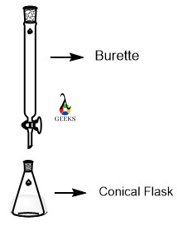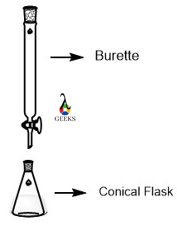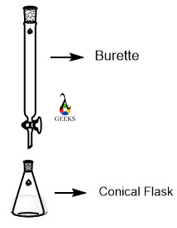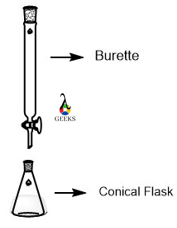The combination of two chemical species, be it an element or a compound, yields results or complexes of varying properties. Let us dive into this specific reaction.
Barium Fluoride(BaF2) is an inorganic chemical compound found from a halide mineral called Frankdicksonite, named after the professor. The BaF2 crystals form fluorite lattices; each F2- ion is coordinated to four Ba2+ centres in tetrahedron. Sulphurous acid, existing mostly in gaseous form, is a strong acid of pH 5.1.
The academic article below will dive into certain properties of the reaction between the two compounds like reaction enthalpy and titration process.
What is the product of H2SO3 and BaF2?
H2SO3 and BaF2 are reacted to form barium sulphite(BaSO3) and hydrogen fluoride (HF) respectively. The reaction occurs as:
- H2SO3 + BaF2→ BaSO3 + 2HF
What type of reaction is H2SO3 and BaF2?
The reaction of H2SO3 and BaF2 is a complete double displacement reaction because two new products are formed.
How to balance H2SO3 and BaF2?
H2SO3 and BaF2 reaction shall be balanced in the following way:
- H2SO3 + BaF2 → BaSO3 + HF
- Both ways must be equal in atoms; thus, after checking stoichiometry, multiply HF with 2 to equal with the fluorine atoms.
- H2SO3 + BaF2 → BaSO3 + 2HF
H2SO3 + BaF2 Titration
H2SO3 and BaF2 titration can be performed as per the following steps but the results will not be as accurate as other titrations:
Apparatus
- Graduated burette
- Conical flask
- Volumetric flask
- Burette stand
Titre and Titrant
- BaF2 solution is used as the titrant, whose concentration is known.
- H2SO3 is the titre, whose concentration is to be measured.
Indicator
Methyl Orange can be used as the indicator as the solution shall remain acidic in nature. It that turns yellow in basic medium and orange in acidic medium.
Procedure
- Samples of measured BaF2 are dissolved well in water, and taken in a conical flask. BaF2 is usually standardised through coulometric methods.
- Sulphurous acid is added to the burette.
- Keeping a check in pH, drops of the indicator- Methyl Orange is added.
- As the titration proceeds, the equivalence point of the reaction appears when the new product forms with a decent colour change. This reaction may take some time.
- As per the titration, the volume of the sample is estimated by the formula:
- VH2SO3 SH2SO3 = VBaF2 SBaF2
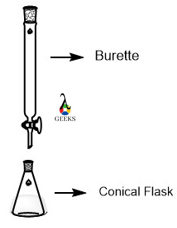
H2SO3 and BaF2 Net Ionic Equation
H2SO3 + BaF2 will yield the following net ionic equation:
- 2H+(aq) +SO32-(aq) + BaF2(s) → Ba2+(aq) + SO32-(aq) + 2H+(aq) + 2F–(aq)
- H2SO3 gets dissociated into hydrogen and sulphite ions.
- BaF2 exists in solid form and doesn’t dissociate till sulphurous acid is added.
- BaSO3 will dissociate to form one Barium ion of the +2 oxidation state and one sulphite ion of the +4 oxidation state of Sulphur.
H2SO3 and BaF2 Conjugate Pairs
H2SO3 and BaF2 reaction bears the following conjugate pairs, which shall differ by one proton:
- The conjugate base of H2SO3 = HSO3–
- The conjugate base of HF = F–
H2SO3 and BaF2 Intermolecular Forces
In the reaction of H2SO3 and BaF2, following intermolecular forces are present:
- In H2SO3, there are acidic protons that are involved in hydrogen bonding.
- BaF2 exhibits slight polarity due to formation of ions, for which it has a higher melting point than Calcium fluoride.
- BaF2 crystallizes in a CaF2 structure, consisting of subsistent Van der Waals’ forces and London interactions.
| Element | Electronegativity |
|---|---|
| Ba | 0.9 |
| S | 2.5 |
| O | 3.5 |
| F | 4.0 |
H2SO3 and BaF2 Reaction Enthalpy
H2SO3 and BaF2 reaction enthalpy data is around -398 kJ/mol. The enthalpy information is as follows:
- Enthalpy of Formation of BaF2 = -1278.75 kJ/mol
- Enthalpy of Formation of H2SO3 = -655.5 kJ/mol
- Enthalpy of Formation of BaSO3 = -1790 kJ/mol
- Enthalpy of Formation of HF = -271.12 kJ/mol
- Enthalpy of Reaction = (-1790 – (2 x 271.12)) – (-655.5 -1278.75) kJ/mol = -398 kJ/mol
Is H2SO3 and BaF2 a Buffer Solution?
H2SO3 + BaF2 is not a strong buffer solution at all as a weakly acidic metal halide can never regulate the pH of a solution. Moreover, it is difficult to make a buffer with H2SO3.
Is H2SO3 and BaF2 a Complete Reaction?
H2SO4 and BaF2 reaction is complete in nature as the reaction reaches an equilibrium.
Is H2SO3 and BaF2 an Exothermic Reaction?
The H2SO3 and BaF2 reaction is quite exothermic in nature as the crystals need some energy to lose their bonds.
Is H2SO3 and BaF2 a Redox Reaction?
H2SO3 and BaF2 reaction is not an actual redox reaction as there is are no changes in oxidation state in the chemical equation.
Is H2SO3 and BaF2 a Precipitation Reaction?
H2SO3 + BaF2 is not a precipitation reaction as the products formed do not result in precipitates.
Is H2SO3 and BaF2 a Reversible Reaction?
In H2SO3 and BaF2 reaction, products have been formed at equilibrium and it is not reversible in nature.
Is H2SO3 and BaF2 a Displacement Reaction?
H2SO3 and BaF2 reaction is a double displacement reaction as the two sets of ions get displaced or exchanged in the product side.
- The barium metal displaces the hydrogen from the acid and forms a weakly acidic salt- BaSO3.
- The fluoride ion undergoes displacement and forms hydrogen fluoride.
Conclusion
BaF2 is a non-linear compound that is insoluble in water and can be used as a scintillator due to its crystal lattice. The titration is not typically useful but can be performed for the estimation of the acid.
